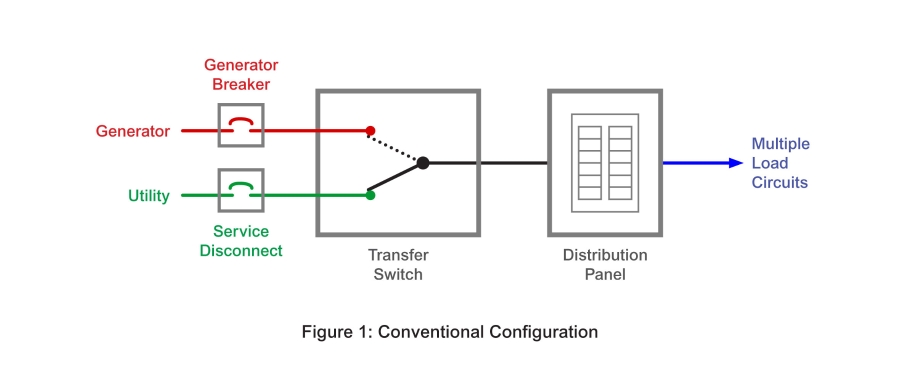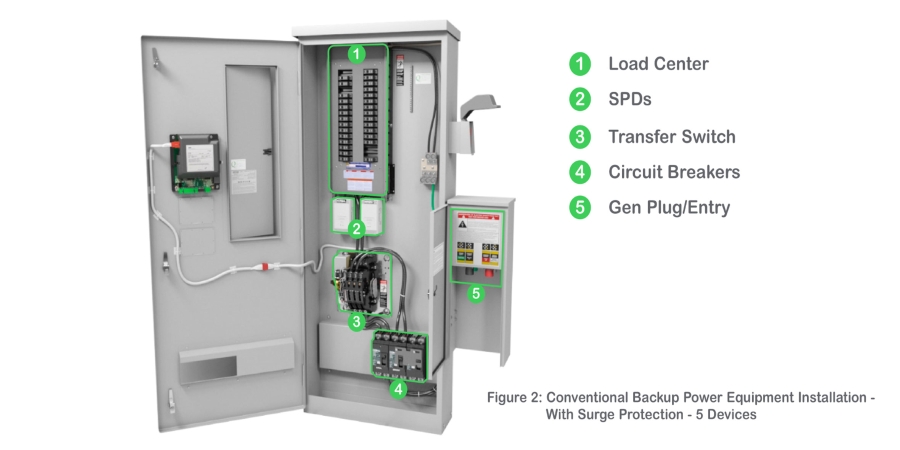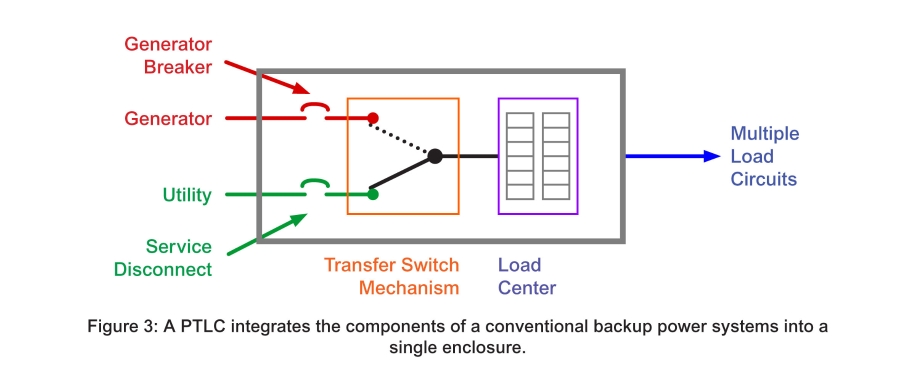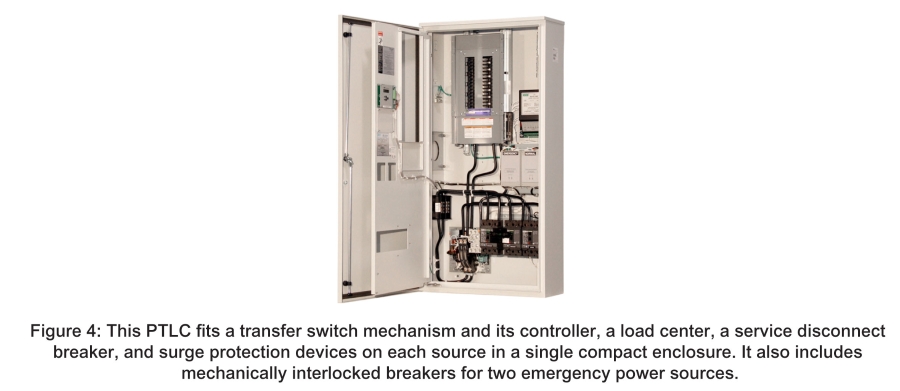Power Transfer Load Centers
In critical power applications, facilities can reap benefits by installing equipment that integrates two or more power devices. By integrating a transfer switch mechanism and a distribution panel (load center) into a single equipment enclosure, Power Transfer Load Centers (PTLCs) streamline installation and require less facility space when compared to traditional separate power devices. The following narrative summarizes PTLC design and application.
PTLC Description
In conventional backup power applications, a transfer switch is used to transfer an electrical load between two power sources, most often a utility service that normally provides power and a standby or emergency generator designed to provide power when an outage occurs on the normal source. Downstream of the transfer switch, a distribution panel allocates power to multiple electrical circuits, typically through circuit breakers that protect downstream conductors and equipment from overcurrents. Figure 1 shows a conceptual diagram of this configuration.
In critical power applications, facilities can reap benefits by installing equipment that integrates two or more power devices. By integrating a transfer switch mechanism and a distribution panel (load center) into a single equipment enclosure, Power Transfer Load Centers (PTLCs) streamline installation and require less facility space when compared to traditional separate power devices. The following narrative summarizes PTLC design and application.
PTLC Description
In conventional backup power applications, a transfer switch is used to transfer an electrical load between two power sources, most often a utility service that normally provides power and a standby or emergency generator designed to provide power when an outage occurs on the normal source. Downstream of the transfer switch, a distribution panel allocates power to multiple electrical circuits, typically through circuit breakers that protect downstream conductors and equipment from overcurrents. Figure 1 shows a conceptual diagram of this configuration.






